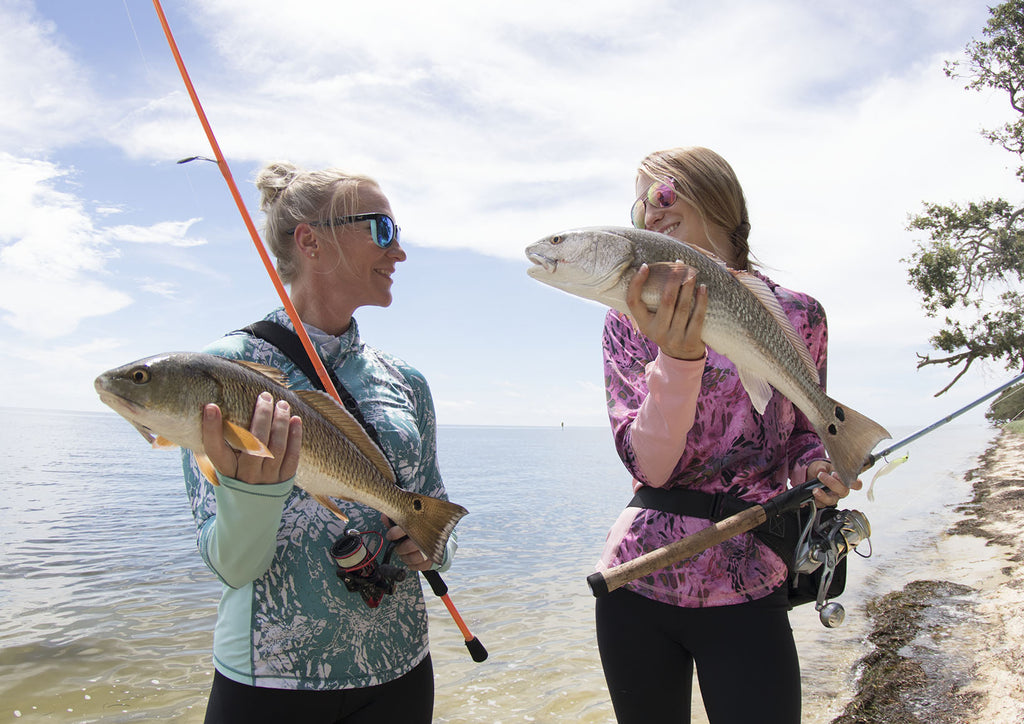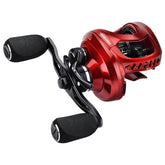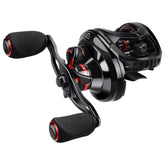
Baitcaster vs Spinning Reel Fishing "Lure" Selection
With the amount of technology in the rod and reel game today, I could use any lure out there with either a baitcasting reel versus a spinning reel. However, with that being said, and with the amount of "great" reels out there, why would I want to? As anglers, we always have to have the best and latest version in our arsenal. We want bigger, faster, smoother and better built baitcasting and spinning reels. So, getting back to the ultimate question of what lures to use where we are talking baitcaster vs spinning reel, let's see the options and why you would want to use either a baitcaster or a spinning reel for different baits, rather than just one reel for them all.
It would be easy to say use spinning gear for lighter lures and baitcasters for heavier lures, but there are a lot of instances where a specialized reel may work better, or the diameter and weight class of the line you are using will make using one or the other better. With the new Finesse baitcasting reels on the market, I may prefer one of these for light hair jigs rather than a spinning reel due to control for example.
Larger or Specialized Lures
Some specialized or specific styles of lures will require the use of a baitcaster versus a spinning reel depending on the type. Below is a list of a few various styles and what I feel would be the best reel. These are just a few, but you can easily see that for the most part, lighter or shallower is best on spinning, where deeper and heavier are best on the baitcaster.
- Baitcaster
- Deep diving crankbaits
- Jigs and Texas Rigged Worms (3/8 ounce or larger)
- Blade Baits (Chatterbait style)
- 3/8 and heavier spinnerbaits
- Crankbaits (2 inch or larger)
- Spinning Reel
- Hair jigs
- Small swimbaits (3 inch or smaller)
- Stick style worms (5 inch or smaller
- Ned
- Small poppers
- Crankbaits (under 2 inches)
Dive Deeper
Okay, by looking above you can get a general feel for the lures with the reel type, but let’s dive a little deeper into why I like certain lures on a specific reel, and not just because I said so. When choosing lures to use between a baitcaster versus a spinning reel, you have to be specific as how those lures will work.
A lure needs to be used to the best of its ability to catch fish for the most part. Sure, you could throw a deep diving crankbait; those 20-foot critters on spinning gear, but you could never get it to work "right." For those baits, a long cast, some real quick cranks of the reel, then the power of a low-speed baitcaster will make that baby wobble and "dig" that no spinning tackle can achieve.
A soft plastic worm is a finesse style bait. When you make the cast, it shimmies and shutters all the way to the bottom, creating a pulsating and appetizing look for a bass. A spinning reel will allow for longer casts to your target; something most anglers will have a tough time achieving with a baitcaster. In any fishing I do, for the most part, I like to sneak up on bass, so long casts for me are important.
Another specialty lure where a baitcaster is best is the larger blade baits and spinnerbaits. These lures, again, need to start working as soon as they hit the water after the cast. The rapid engage of the baitcasters clutch when you start reeling makes this all possible. Slow rolling a spinnerbait across rocky bottoms is best on a baitcasting reel as you will have more control over the lure.
Smaller popping lures that stay on the surface have a cadence about them that a spinning reel and rod combo will impart what a baitcaster cannot do. When I use a small popper, again the distance factor weighs in. I want a long cast to my target, then the ability to take up line quick – using my KastKing Speed Demon Elite Spinning reel. This allows me to get that popper really chugging along, and allows me to stagger and start the "pop" with ease.
Jigs and Texas rigged worms and creatures of all types that weight 3/8 ounces or larger should always be fished with a baitcasting reel. These jigs need the power you can only get when using a baitcasting reel. The jig is also pitched and flipped, where the Texas rigged is cast and slowly dragged, usually through heavy cover. A baitcasting reel will give you optimum performance versus a spinning reel, which will not.
Wrap it up
There is no "rule" that any bait or lure has to be used with a specific reel – baitcasting or spinning. What I have found over my 50 plus years of fishing is that the correct presentation of a given lure will always out do a presentation that is less than perfect. If you want to catch more fish, and catch them on a consistent basis, I suggest you pay attention to detail and make sure the reel you use for a specific lure will always allow that lure to present itself in the most realistic and natural look. Today’s reels make the choices easy, and any angler – young or old, novice or expert – can always be using the best reel for the lure.
Nothing beats a large capacity baitcaster like the Kapstan Elite 300 for throwing larger lures to big fish.

The Speed Demon Elite Spinning reel is a great choice for small worms, poppers and bladed baits.

The smaller Zephyr BFS spinning reel is best for smaller crankbaits and small under-spin style lures.

For larger spinnerbaits, the baitcast reel is best. On smaller ones, I prefer the spinning reel.













